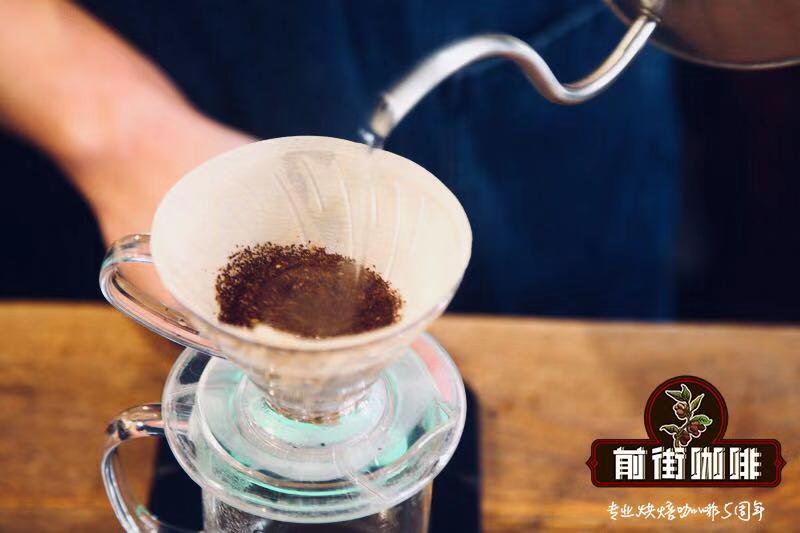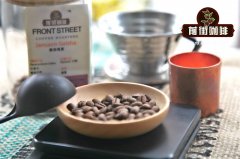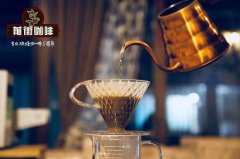Introduction of Ugandan coffee beans A brief introduction to the taste characteristics of Ugandan coffee seed treatment

Professional coffee knowledge exchange more coffee bean information please follow the coffee workshop (Wechat official account cafe_style)
Introduction to the varieties, treatment and characteristics of Qianjie Coffee-Uganda Coffee
Uganda, located in the Great Lakes region of east-central Africa, is almost entirely on the East African Plateau, and Churchill praised it as the "Pearl of Africa". But Uganda is not dry at all, far from our impression of impoverished Africa. Lake Victoria, the world's second-largest freshwater lake, has 42.8% of its waters in Uganda, where the Nile originates. Although the equator crosses Uganda, Uganda is known as a "plateau water village" because of its high terrain, vertical and horizontal rivers and dotted lakes. These unique natural conditions have created the innate basis for the cultivation of coffee in Uganda.
More than a hundred years ago, European colonists brought coffee cultivation. Uganda now ranks eighth in the world in coffee production and second in Africa, after Ethiopia. In the past few decades, coffee has been promoted to the most important pillar industry in Uganda, accounting for 20 per cent of Uganda's national exports, which are the main source of foreign exchange earnings. This is a country that depends on coffee for a living. 1/5 Ugandans, about 8 million people, depend on coffee cultivation for a living. However, most of the plants planted by Ugandan farmers are Roberta, which is of poor quality and can only be acquired by multinational companies for commercial mass production.
Ugandan coffee is more like a rising star on the African continent than the established Ethiopian and Kenyan regions, but Ugandan coffee is still in a state of obscurity. In the early 1990s, the government gave up monopoly and ceded export rights to cooperatives, large and small, greatly activating the production and quality of Ugandan coffee. The turning point that really attracted the attention of the world was the 2017 World Coffee Brewing Competition, in which Hungarian Michael won the fourth place with a pair of sun-dried Ugandan beans. in this game, other contestants used Rosa Xia, while using the unknown Ugandan coffee to break out of the siege and enter the top four, it can be said that it is already a dark horse in the dark horse. You should know that in the coffee competition held in the main producing areas like Panama, Rosa competes separately from other varieties of coffee beans, otherwise there is no doubt that professional teams are competing with amateur teams.
In the past, Uganda had only washed coffee (the natural conditions of abundant rainfall and more precipitation in the country), but the sun treatment made the coffee beans stronger in aroma and sweetness, more obvious in fruit flavor and richer in flavor levels. In the retro popularity of sun-dried beans today, the elegant sun flavor, combined with the flavor characteristics of the coffee producing area, is the most fascinating to coffee lovers.
The basic process of Natural is to remove floating beans-sun-detach. Sunbathing is the oldest method of treatment, while water washing is still the mainstream, it has been revived in recent years. For example, there are two kinds of water washing and sunbathing methods for Yejia Xuefen. This method has the advantages of simple process, low cost (especially in water-deficient areas), good alcohol thickness, especially high sweetness, and most of them have ripe fruit flavor and even red wine flavor. However, the sun exposure method is too dependent on the weather, requiring uninterrupted sunny weather for a long time, and the drying process and degree are difficult to control.
In the sun process, it is easy to mix with sundries, at the same time, because the pulp has not been removed, it is easy to get moldy and the stability is not enough. The sun beans on hand have the flavor produced in the process of sun drying, that is, the charming effect of the flesh wrapped in raw beans in the drying process, and the fermented sour taste with a little earthy flavor is more obvious in the brewed aroma, but this flavor is not miscellaneous. It is precisely the special flavor that today's sun-drying method pursues, making full use of the fruit aroma and sweetness in the pulp to act on raw beans. It is also the inevitable result of sun fermentation.
Honey treatment method
The basic process of honey treatment (Honey) is: removal of floating beans-peeling-drying-detachment. Honey treatment, also known as semi-washing, invented by Brazilians, can be said to be an upgraded version of the sun-tanning method, which avoids mildew by removing the pulp first. In addition, there is no need to clean the pulp residue on the coffee beans, which also reduces the cost of water treatment. In terms of taste, as the raw coffee beans are dried in the form of pectin, the raw beans absorb the sugar in the pectin, which greatly improves the sweetness of the coffee and enriches the flavor.
However, the steps of honey treatment are tedious and the cost is high, and the finished products of honey treatment are rare in the market. The sweet peas we have have a strong sweet smell as soon as we open the bag, which makes people suspect that this is not a bag of coffee but a bag of dried fruit. The pungent aroma is more powerful than the first two, while the entrance is sweet and fruity, mellow and sweet, with an endless aftertaste.
END
Important Notice :
前街咖啡 FrontStreet Coffee has moved to new addredd:
FrontStreet Coffee Address: 315,Donghua East Road,GuangZhou
Tel:020 38364473
- Prev

The origin of Kenyan coffee beans introduces how to drink Kenyan coffee powder and share it.
Professional coffee knowledge exchange more coffee bean information please follow the coffee workshop (Wechat official account cafe_style) Qianjie Coffee-Kenyan coffee producing area, hand brewing and sharing favorite individual coffee, full of confidence in coffee producing countries like Kenya, not only Kenyan coffee is rich in flavor: strong aroma and obvious acidity, especially Kenyan coffee has been harvested.
- Next

A brief introduction to the characteristics of Ugandan Coffee producing areas in Africa how to brew and share Ugandan coffee
Professional coffee knowledge exchange more coffee bean information please follow the coffee workshop (Wechat official account cafe_style) Qianjie Coffee-Uganda Coffee production area characteristics, hand brewing sharing, taste Uganda is located at the source of the Nile, this is a landlocked country not off the sea in Africa, although it has a long history of producing coffee like other East African countries, it is a war caused by ethnic antagonism.
Related
- Beginners will see the "Coffee pull flower" guide!
- What is the difference between ice blog purified milk and ordinary milk coffee?
- Why is the Philippines the largest producer of crops in Liberia?
- For coffee extraction, should the fine powder be retained?
- How does extracted espresso fill pressed powder? How much strength does it take to press the powder?
- How to make jasmine cold extract coffee? Is the jasmine + latte good?
- Will this little toy really make the coffee taste better? How does Lily Drip affect coffee extraction?
- Will the action of slapping the filter cup also affect coffee extraction?
- What's the difference between powder-to-water ratio and powder-to-liquid ratio?
- What is the Ethiopian local species? What does it have to do with Heirloom native species?

